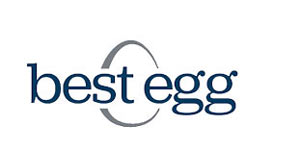Unitranche Debt: An Overview
Sep 09, 2024 By Kelly Walker
When two types of debt are combined into one loan, the result is called unitranche debt or finance. Banks can better compete with private debt funds thanks to this innovative loan form that combines traditional and non-traditional elements. Borrowers of such debt often pay an interest rate that falls between the rates at which the individual components of the debt may be obtained.
The use of unitranche debt is frequent for transactions involving institutional finance. It makes it possible for the borrower to get money from numerous parties, which may reduce costs due to multiple issuances, allow for higher fundraising via a single transaction, and promote a speedier purchase during a buyout.
Understanding Unitranche Debt
Deals involving unitranche debt may be structured in a variety of different ways. The priority repayment levels for the borrowers are the major focus of attention. Borrowers might agree to different priority levels for repayment in the event of default in a structured unitranche debt arrangement, which can result in a wide range of risk levels being incurred by the transaction.
A parallel may be drawn between unitranche debt and syndicated debt as well. Both kinds of debt are organized according to the terms of an overarching issuance agreement that gives the issuer an average cost of the debt they are taking on.
Tranches are sub-groups inside a structured debt vehicle, and each class is given a unique name. The debt issuer will often work with a large investment bank or a consortium of investment banks to propose the structure of the debt during the underwriting process. The underwriters will establish and record each tranche's details, including the interest rate, maturity date, and order of priority.
In most cases, seniority is the fundamental criterion determining how each subsequent tranche level conditions are determined. The different portions of the debt, known as tranches, might be distributed as a dividend and be given names at the class level, such as the year of the issue followed by a letter.
The underwriters organize the tranches in terms of their seniority, with the tranches that carry the least risk receiving the greatest seniority for repayment in the event of a failure. These tranches may also be referred to as secured tranches in certain contexts. If the issuer goes into default, each tranche will have a different amount of seniority.
To assist in the marketing and disclosure of tranche sales, some unitranche vehicles may additionally grade the individual tranches. Underwriters may also arrange each tranche with different conditions depending on their preferences. This allows for the customization and creation of individual tranches, each of which may have distinct terms that are advantageous for the issuer. There may be provisions like call rights, the full payback at the principal with no coupon, and fluctuating rates as opposed to fixed rates.

Syndicated Loan vs. Unitranche Debt
A syndicated loan is also a kind of unitranche debt in certain circumstances. A unitranche loan is comparable to a syndicated loan in that both involve numerous lenders investing in the borrower's financial future. Syndicated loans need an intensive underwriting procedure and the involvement of underwriters. However, certain syndicated loans may involve distinct loan portions to each lender, referred to as tranches. In general, the lenders participating in a syndicated loan will all agree to conditions that are comparable to one another. Compared to unitranche debt, the overall architecture of syndicated loans is often considered less complicated.
Comparing Unitranche Debt and Equity
As a result of certain of the contractual provisions included in a unitranche agreement, unitranche financing has a few similarities with equity financing. These similarities may be found in the financing's characteristics. One of how these two different kinds of funding are comparable to shareholders is one of their shared commonalities. Unitranche financing seeks, in the same way, that shareholder investment does, to provide funds for long-term investment. It has the advantage of assuring effective decision-making during the duration of the loan and throughout the process of negotiating the terms of the debt arrangement.

When a firm is financed with equity, the investors have a voice in the company's decision-making process and are entitled to know what the company has in store for the future. After the payment of secured creditors, shareholders have the right to receive a share of the remaining firm if the company chooses to dissolve itself. In the same manner, unitranche providers ask for shares in the firm that the borrower works for in the hopes of taking control of the company when an enforcement event occurs. Additionally, the lender will dispatch consultants to the borrower to give market information and advice on strategic concerns.

Best Mortgage Lenders Of 2023 If You Have A Bad Credit

Why Is It Easier to Find a Job While Employed?

Best Student Loans

How to Avoid Penalty on Premature Withdrawal of Fixed Deposit?

All About Personal Finances Products

A Comprehensive List of Lenders offering Affordable Motorcycle Loans

What is a Wrap Account

What Is a Credit Rating?

Best Egg Personal Loans Review

